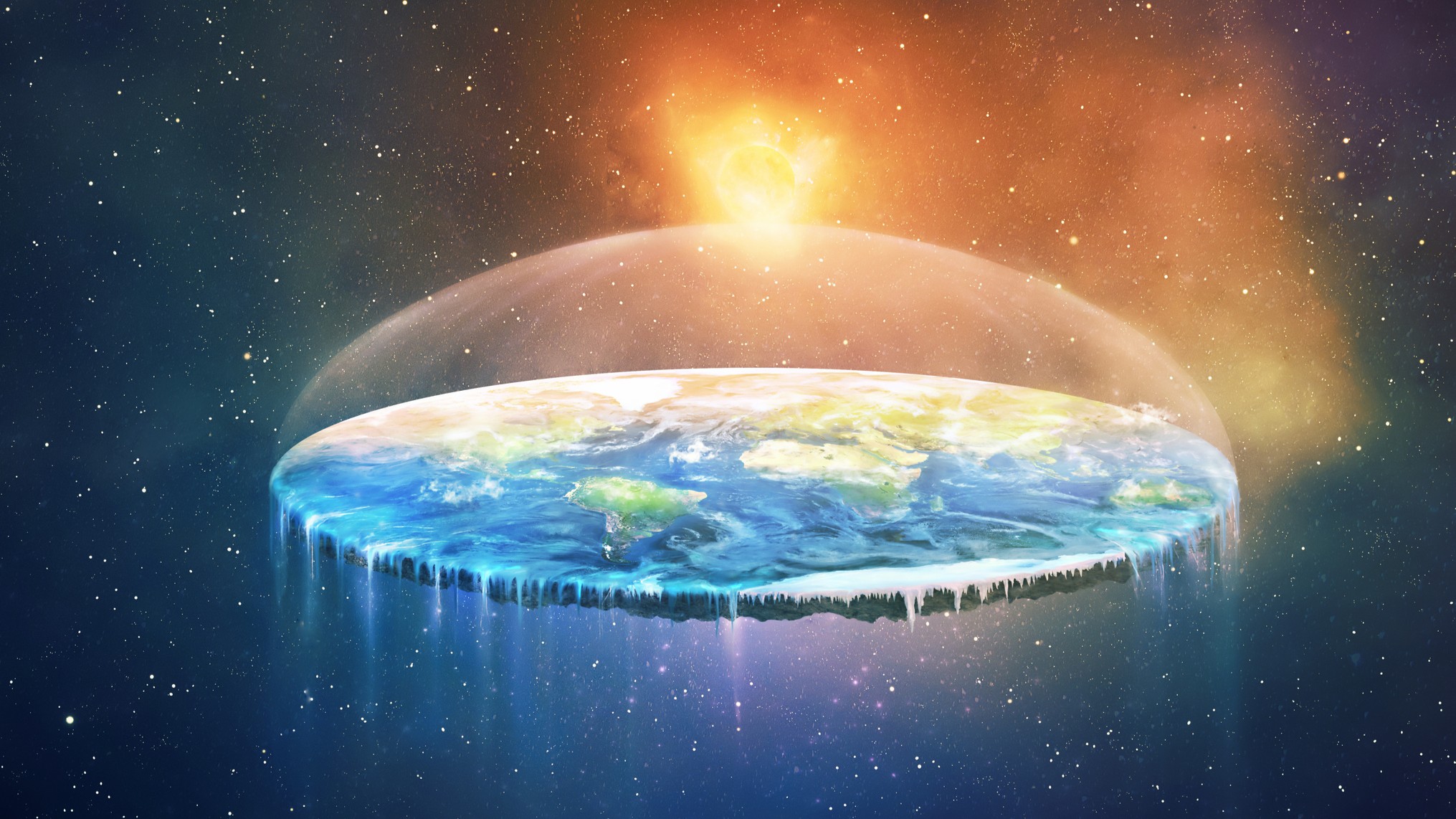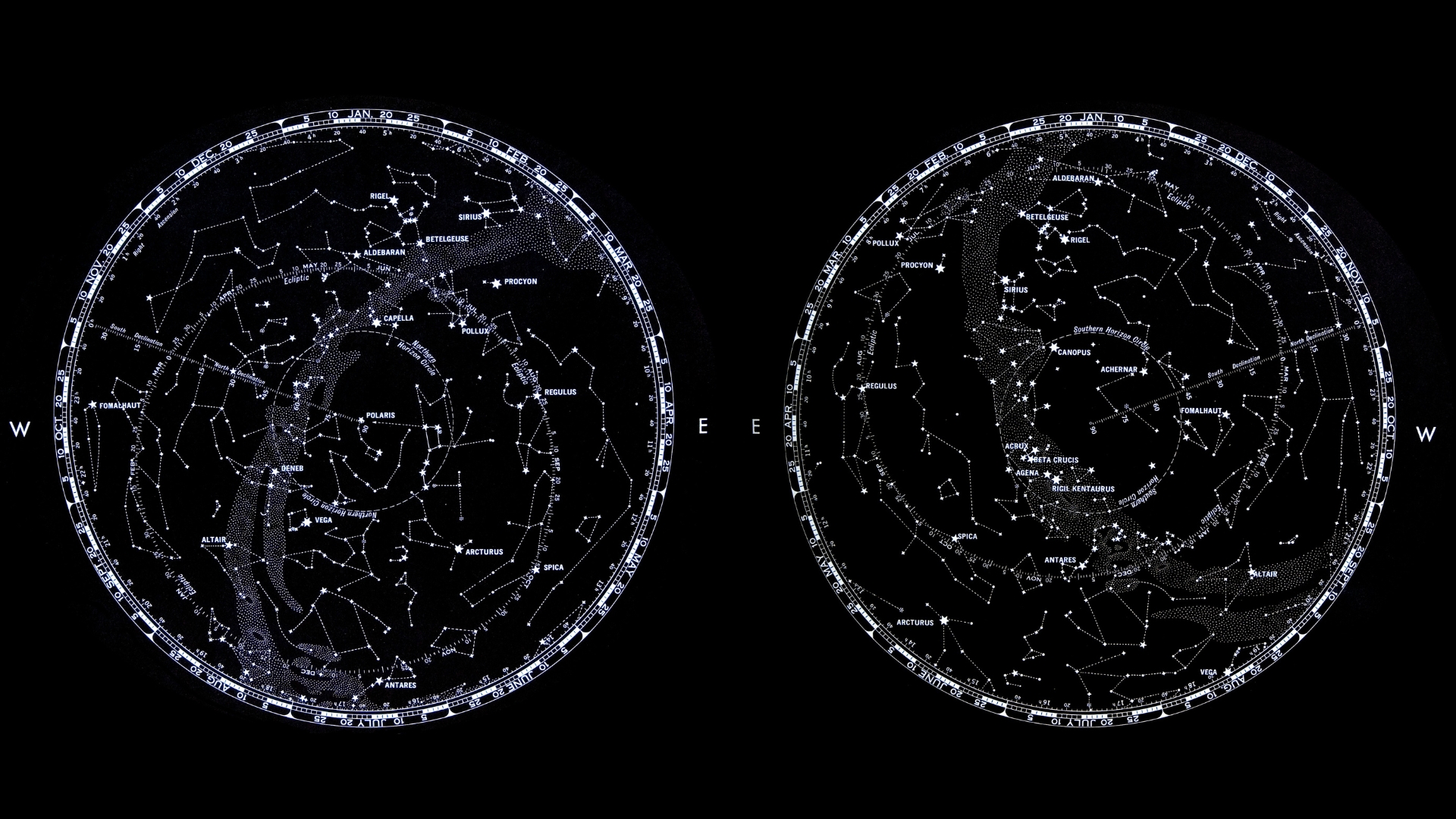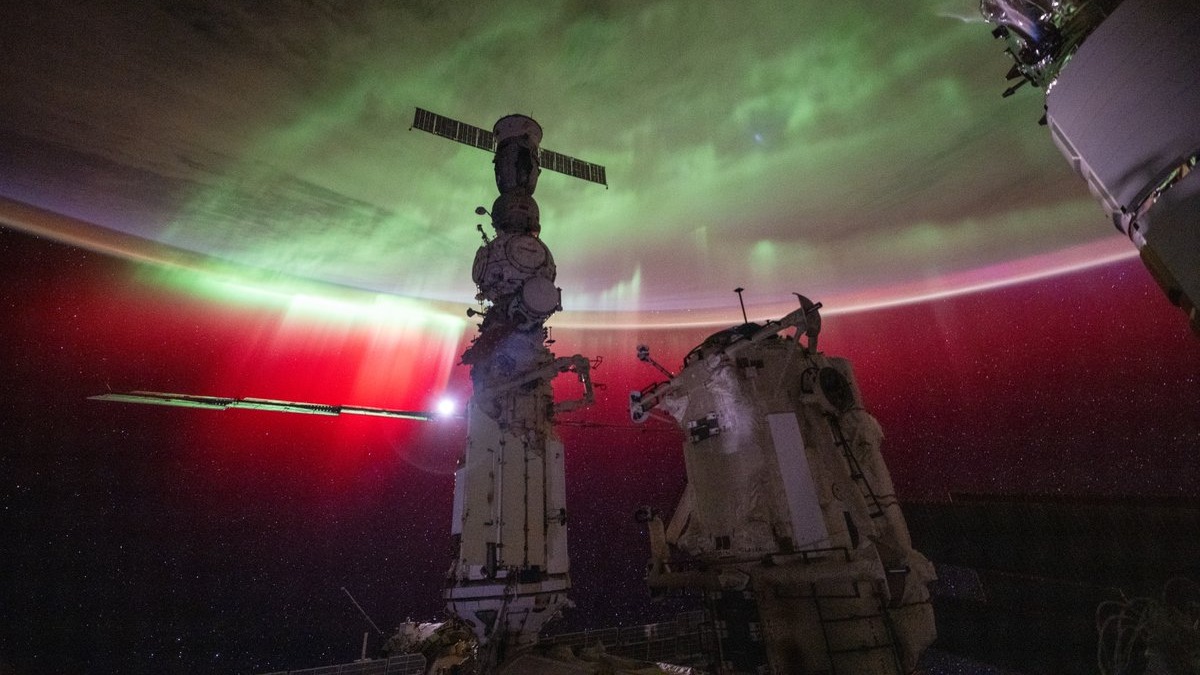
For many centuries a wealth of scientific evidence has demonstrated that the Earth is a sphere. Despite this overwhelming proof from the fields of physics, astronomy and even everyday observations, Flat Earthers reject mainstream science and still believe in Flat Earth theory.
But why do people believe the Earth is flat and how can you effectively debate their claims?
Related: How big is Earth?
Scientific proof that Earth is round (and how to explain it)
To put it bluntly, we know more about the curvature of Earth than almost any other topic in the realm of physical science. There are countless experiments, observations and demonstrations that have, time and time again, revealed the curve of the Earth.
And it all starts with the horizon.
As objects recede from you, they begin to look smaller and slowly disappear in a very specific order: first, their bottoms become hidden, and then their tops. If you've ever watched a ship on the horizon, you've seen this effect firsthand. Similarly, from a great distance, the tops of tall objects like mountains are visible well before their bases.
And Earth's curvature is clearly apparent from high altitudes, as Capt. Albert Stevens of the U.S. Army Air Corps showed in the 1930s. In December 1930, for example, Stevens snapped a photo looking westward while flying at an altitude of 21,000 feet (6,400 meters) above Villa Mercedes, Argentina.
"The Andes Mountains, 287 miles [462 kilometers] away, and although taller than the plane's altitude, lay below the sensible horizon, marked by the white horizontal line in the photograph," NASA officials wrote in a description of the flight. "The Earth's curvature explains this phenomenon, as described in the diagram accompanying the photograph. The Earth's curvature is also visible laterally in the photograph, although the effect is subtle as the image encompasses only 1/360 of the Earth's circumference."
And in November 1935, Stevens and Capt. Orvil Anderson took a photo from a balloon that lifted off from Rapid City, South Dakota and soared to a maximum altitude of 72,395 feet (22,066 m).
"The photograph showed the troposphere-stratosphere boundary and the actual curvature of the Earth and demonstrated the potential for long-range reconnaissance from high-altitude balloons," NASA officials wrote.
Earth's atmosphere is capable of playing funny tricks on our eyes, with different layers of air bending light in interesting directions. This phenomenon, a side effect of Earth's curvature, isn't a sure-fire guarantee of our planet's curve, but it's a start.
Astronomical proof from stars
If you can't look to the horizon for evidence, you can look up.
Different stars are visible from different parts of Earth in two distinct ways. First, there is the division between the northern and southern hemispheres. If you're in the Northern Hemisphere, you can easily see Polaris, the star nearly directly above Earth's north geographic pole. But as you travel south, Polaris sinks lower toward the horizon until it disappears entirely.
At the same time, new constellations appear — ones that would be completely obscured by Earth's curve if you stayed up north. This effect is impossible on a flat Earth.

How lunar eclipses prove Earth is round
During a lunar eclipse, Earth passes between the sun and the moon, casting a shadow on the moon. The shadow is always, always a circle — no matter where you are on the planet. The only way to always cast a circular shadow is if the object casting it (Earth) is a sphere. It's basic geometry.
Why photos and videos from space prove a spherical Earth

Thousands of photos of Earth taken by satellites and astronauts confirm our planet's shape. These images come from multiple space agencies, including NASA, ESA, and private companies like SpaceX, making a global conspiracy virtually impossible.
Some Flat-Earthers claim that NASA fakes space images. However, independent amateur astronomers have captured Earth's curvature, and even high-altitude balloons show the same effect. If space agencies were faking images, countless private individuals and organizations would have to be in on the deception.
Why do some people still believe in a flat Earth?
This discussion isn't really about the actual evidence of the scientific process. Flat-Earthers don't arrive at their beliefs through scientific observation. Instead, they suspect they are being misled and lied to. The real question isn't "why do people believe the Earth is flat?" But rather "Why do some people believe in a conspiracy" The answer is simple: a lack of trust.
Many people don't trust the representatives of society and that distrust extends to scientists, academics, and government agencies. By claiming that Earth is flat, believers are expressing a deeper skepticism about institutions and science itself.
So if you find yourself talking to a Flat-Earther, skip the evidence and arguments first. Instead, ask yourself how you can build trust.
Effective strategies for debating a Flat-Earther
Addressing common counter arguments
Claim: "NASA fakes space images."
Response: Satellite data from multiple independent space agencies, including NASA, ESA and private companies, confirm Earth's roundness. Amateur astronomers and even high-altitude balloons show the same curvature.
Claim: "The horizon always looks flat"
Response: The horizon appears flat because of human perspective and scale. However, from higher altitudes — such as those captured by weather balloons or aircraft — the curvature is clearly visible.
Claim: "If the Earth is spinning, why don't we feel it?"
Response: Earth's rotation is constant and smooth, much like traveling in a plane at cruising altitude. Because we move with the planet, we don't perceive it's motion directly.
Flat Earth FAQs
How do pilots know the Earth is round?
Pilots rely on navigation systems that account for Earth's curvature. Flight paths and GPS calculations would not work if the planet were flat.
Can you see Earth's curve from a plane?
At high altitudes, particularly above 35,000 feet, the curvature of the Earth becomes faintly visible.
Why does gravity prove Earth is a sphere?
Gravity pulls mass toward a center, forming objects into spheres. Every planet and moon observed follows this principle.
Did a Flat Earther accidentally prove Earth is round?
Yes! In 2018, a group of Flat Earthers conducted a $20,000 gyroscope experiment expecting to prove no rotation. Instead, it recorded Earth's 15-degree-per-hour spin— confirming our planet's roundness.
Additional resources
You can learn more about the first photographs that clearly showed Earth's curvature in this NASA story. This explainer from Arizona State University lays out clearly and concisely the plentiful evidence for our planet's spherical shape. (Nearly spherical, rather: Earth's rotation causes it to be slightly squashed at the poles and swollen at the equator, a shape known as an oblate spheroid.) And this piece by fivethirtyeight.com explains why people believe in conspiracy theories such as the flat-Earth idea.
Bibliography
- Bergreen, L. "Over the Edge of the World: Magellan's Terrifying Circumnavigation of the Globe." William Morrow, 2003. https://www.amazon.com/Over-Edge-World-Terrifying-Circumnavigation/dp/006093638X
- Nataraj, N. "Earth and Space: Photographs from the Archives of NASA." Chronicle Books, 2015. https://www.amazon.com/Earth-Space-Photographs-Archives-NASA/dp/1452134359
- Novella, S. "The Skeptics' Guide to the Universe: How to Know What's Really Real in a World Increasingly Full of Fake." Grand Central Publishing, 2018. https://www.amazon.com/gp/product/1538760533/







